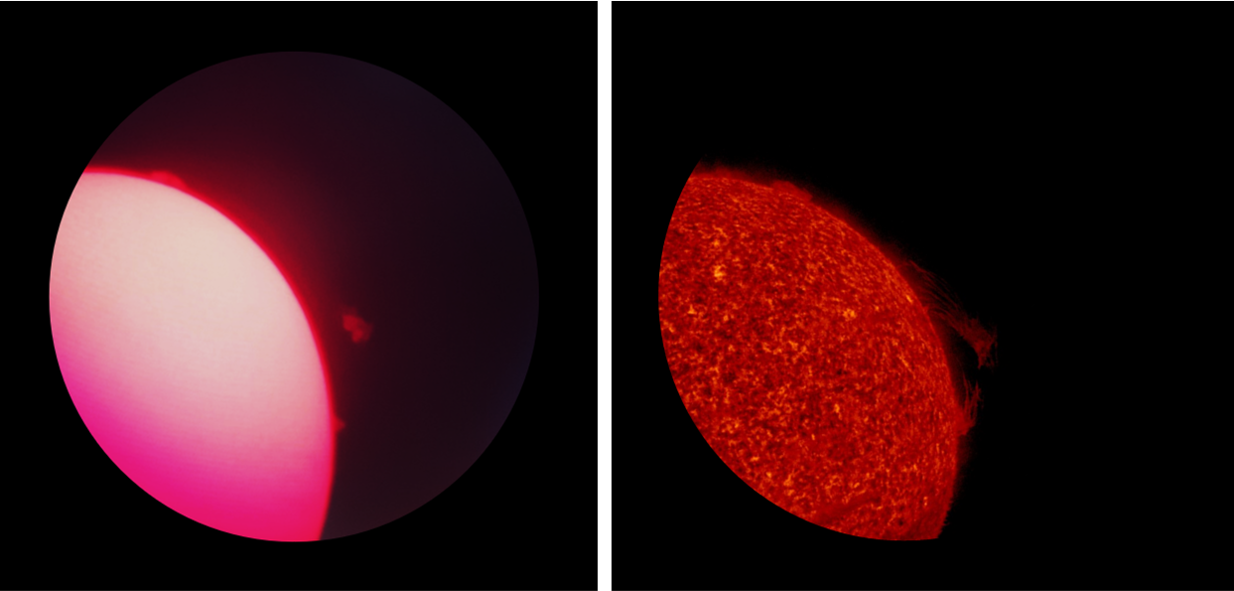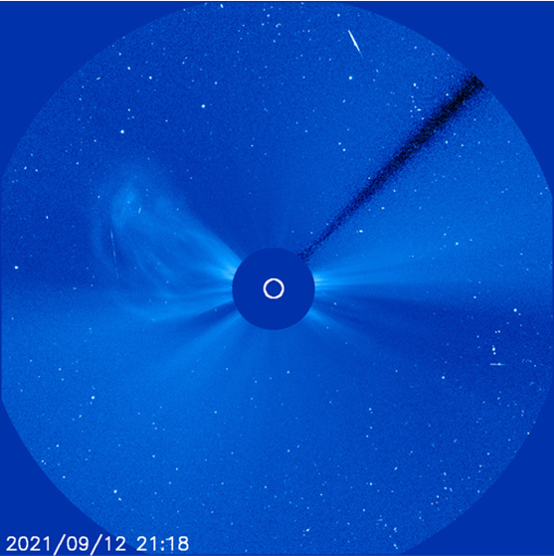A quiescent prominence erupted around noon on 12 September near the Sun's northeast limb. Solar prominences are clouds of charged particles ("plasma") above the solar surface squeezed between magnetic regions of opposite polarity. Being cooler and denser than the plasma underneath and their surroundings, they appear as bright blobs when seen near the solar limb and as dark lines when seen on the solar disk (then they are called "filaments"). Special filters are required to observe these features, such as in the Hydrogen-alpha (H-alpha) line in the red part of the solar spectrum (656.28 nm), or in some extreme ultraviolet (EUV) passbands such as SDO/AIA 304.
The clip underneath shows the gradual rise of the prominence starting on 11 September, until noon on 12 September when it fully erupts. At its longest, the prominence had an extent of more than 450.000 km, i.e. longer than the average Earth-Moon distance. Note this is a minimum length, as the prominence is seen in profile along the limb. The images are made with the SDO/AIA 304 filter, showing the Sun at temperatures near 80.000 degrees. Near the end of the clip, there's also the eruption of a 600.000 km long filament close to the central meridian and starting early on 13 September (before and after image).

The prominence eruption was also visible with backyard H-alpha telescopes, thus showing the Sun at even lower temperatures near about 10.000 degrees. The picture underneath on the left was recorded with a modest 4cm H-alpha telescope at 08:52UT on 12 September, clearly showing a blob of plasma just hanging in the Sun's atmosphere, only hours before it was slingshotted into space. On the right is an SDO/AIA 304 image taken at about the same time (08:48UT), rotated such that it is oriented more or less in the same way as the H-alpha picture, with the prominence now on the right of the solar image. The comparison shows that the H-alpha blob mostly corresponds to the top of the prominence seen in AIA 304 (hovering about 45.000-60.000 km above the solar limb), and that it was still connected to the solar surface with hotter material not visible in H-alpha, only in AIA 304. The AIA 304 clip shows that part of this material (southern portion) flowed back to the solar surface shortly after the eruption. The associated coronal mass ejection was not directed towards the Earth (SOHO/LASCO).







